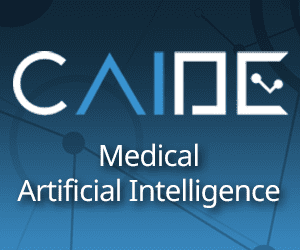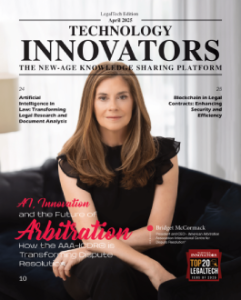Bridging the gap between silicon (hardware) and software is becoming one of the most pressing priorities for CIOs, especially as the semiconductor industry becomes increasingly intertwined with software development, AI, and edge computing. The convergence of these two traditionally distinct areas is reshaping how businesses manage their IT ecosystems, pushing CIOs to integrate semiconductor technologies with software stacks efficiently.
Key Factors in Bridging the Silicon-to-Software Gap:
- Hardware-Software Co-Design: Modern semiconductor development often requires simultaneous design of both hardware and software. CIOs need to ensure that teams working on software and semiconductor hardware are synchronized to create optimized solutions. This co-design approach allows for more effective use of hardware capabilities, particularly in AI, IoT, and edge computing environments.
- Optimized Software for Specialized Chips: With the rise of specialized chips such as GPUs, TPUs, and AI accelerators, CIOs must ensure that software applications are optimized to run efficiently on these hardware platforms. Integrating software with specialized silicon can lead to significant performance improvements, but it requires close collaboration between software developers and hardware engineers.
- Middleware and Abstraction Layers: One approach to simplifying the integration between silicon and software is through middleware and abstraction layers. Middleware can allow software to interact with hardware more easily by abstracting the complexities of different hardware architectures. CIOs are focusing on developing or deploying middleware that helps bridge the gap, making it easier to run software on a variety of semiconductor platforms.
- AI-Driven Software for Chip Design: The semiconductor industry increasingly uses AI to assist in chip design. AI and machine learning tools are being applied to automate aspects of semiconductor design, reduce development time, and optimize performance. CIOs are driving the integration of AI into the design process, fostering collaborations between AI engineers and semiconductor experts to streamline chip development.
- Cloud and Edge Integration: As edge computing grows, semiconductors designed for edge applications must integrate seamlessly with cloud software. CIOs must ensure that data can flow efficiently between decentralized edge systems and cloud infrastructure, which requires robust software frameworks that can manage the complexities of real-time data processing, security, and scalability.
- Cross-Disciplinary Teams: Bridging the gap between silicon and software often requires creating cross-disciplinary teams that include software developers, semiconductor engineers, data scientists, and AI experts. CIOs must foster collaboration and encourage knowledge sharing between traditionally separate fields to develop cohesive solutions.
Challenges in Semiconductor-Software Integration:
- Fragmented Ecosystem: The semiconductor industry is characterized by a fragmented ecosystem of chipmakers, software vendors, and system integrators. CIOs must manage this complexity by ensuring that their organization can handle various software-hardware integration points and that their IT architecture is flexible enough to accommodate different semiconductor platforms.
- Legacy Systems: Many organizations still rely on legacy IT systems that may not be compatible with the latest semiconductor technologies. CIOs must find ways to integrate newer silicon-driven innovations with existing infrastructure, which may require investing in modern software architectures or developing custom solutions.
- Security and Compliance: The integration of hardware and software adds complexity to the security landscape. CIOs must ensure that security measures are implemented across the entire stack, from hardware (e.g., secure enclaves in chips) to software (e.g., encryption and secure protocols). Additionally, compliance with data privacy regulations must be maintained at both the hardware and software levels.
- Speed of Innovation: The semiconductor industry is evolving rapidly, with innovations in chip architectures and process technologies frequently emerging. Keeping up with these changes requires CIOs to adopt a flexible and forward-looking strategy for software development that can adapt to new hardware technologies without requiring constant rework.
Strategies for CIOs to Bridge the Gap:
- Invest in R&D for Hardware-Software Integration: CIOs should allocate resources to research and development efforts focused on tightly integrating software with the latest semiconductor innovations. This could include developing in-house capabilities or partnering with external semiconductor firms.
- Adopt Agile Development Practices: Agile methodologies are essential for bridging the silicon-software gap. By promoting agile practices, CIOs can ensure that software and hardware teams work together iteratively, quickly adapting to changes and challenges as they arise.
- Prioritize Open Standards and Interoperability: Emphasizing open standards can help mitigate some of the complexities of hardware-software integration. CIOs should advocate for industry-wide adoption of standards that enable interoperability across different semiconductor platforms, allowing for smoother integration and reducing vendor lock-in risks.
- Collaborate with Semiconductor Providers: Building strong relationships with semiconductor providers can provide CIOs with early access to the latest innovations and insights into how new chip technologies will interact with software. This collaboration can lead to more effective hardware-software integration, ensuring that both sides are optimized for performance and efficiency.
- Leverage AI and Automation Tools: AI tools can be employed to automate parts of the integration process, such as performance tuning and optimization for specific hardware architectures. CIOs should explore how AI can enhance both the development and deployment of software tailored for advanced semiconductors.
Opportunities for CIOs in Semiconductor-Software Convergence:
- Performance Optimization: By focusing on tight hardware-software integration, CIOs can unlock new levels of performance in applications such as AI, machine learning, and high-performance computing (HPC).
- New Product Development: Collaborating closely with semiconductor manufacturers and leveraging software integration can lead to innovative new products, especially in industries like automotive (autonomous vehicles), healthcare (medical devices), and consumer electronics (smart devices).
- Competitive Advantage: Companies that successfully bridge the silicon-to-software gap will be better positioned to create differentiated products and services, providing a competitive edge in increasingly technology-driven markets.
Conclusion:
As semiconductor technologies advance, the need for tight hardware-software integration becomes paramount. CIOs play a crucial role in orchestrating this convergence, ensuring that their organizations can harness the full potential of both silicon and software. By focusing on co-design, fostering cross-disciplinary collaboration, and investing in modern architectures and AI-driven tools, CIOs can bridge the gap and drive innovation across their enterprises.





